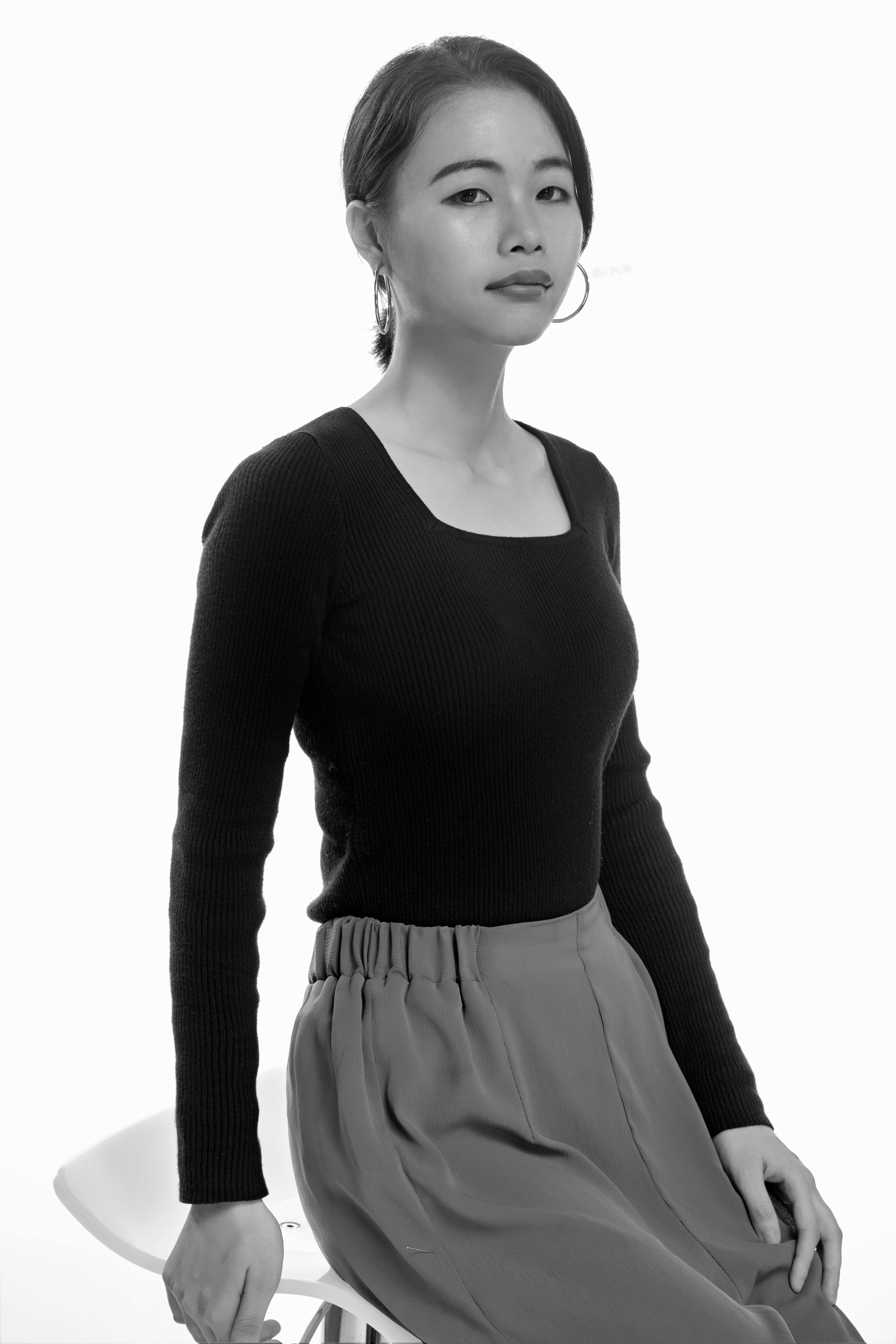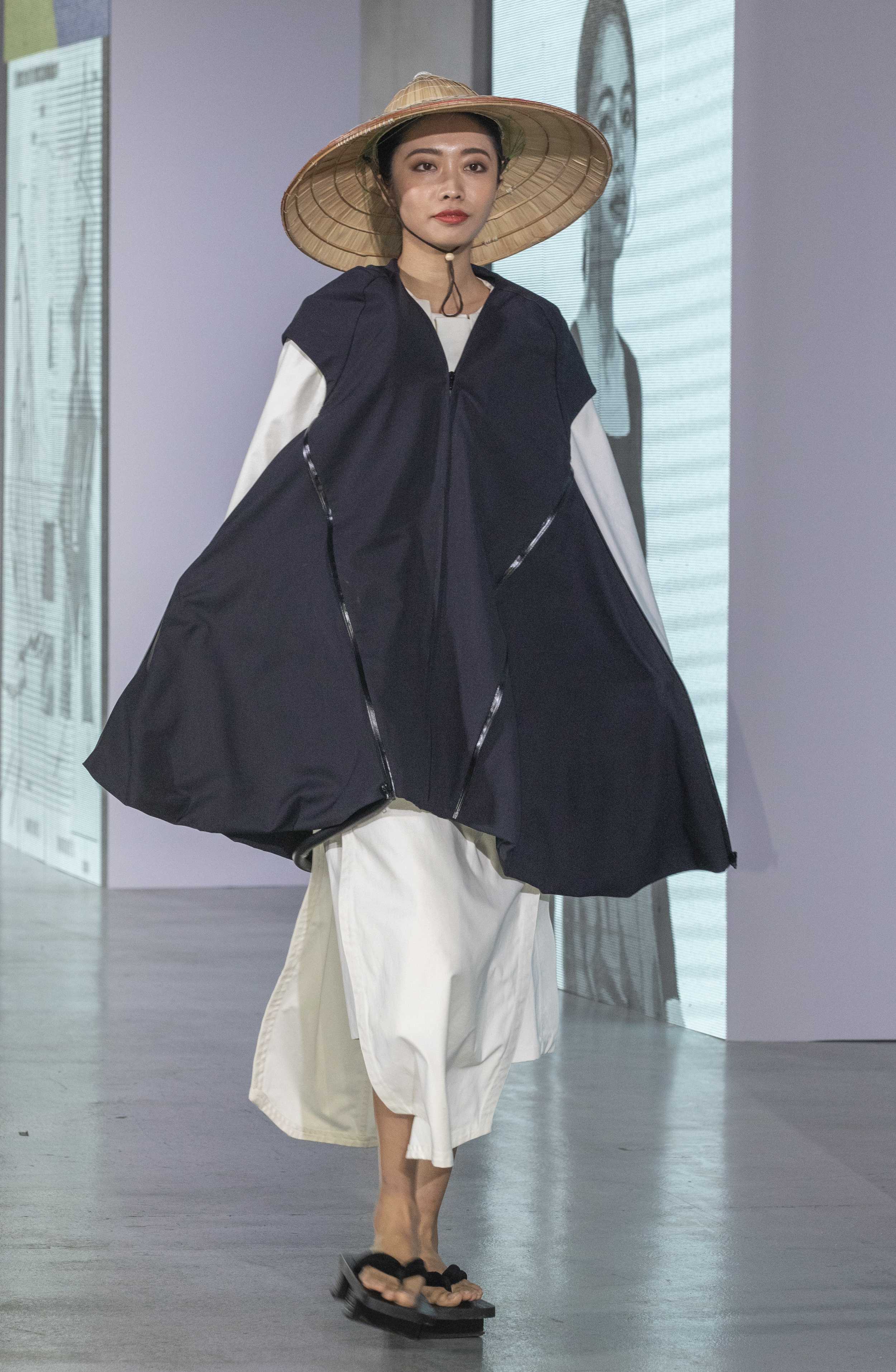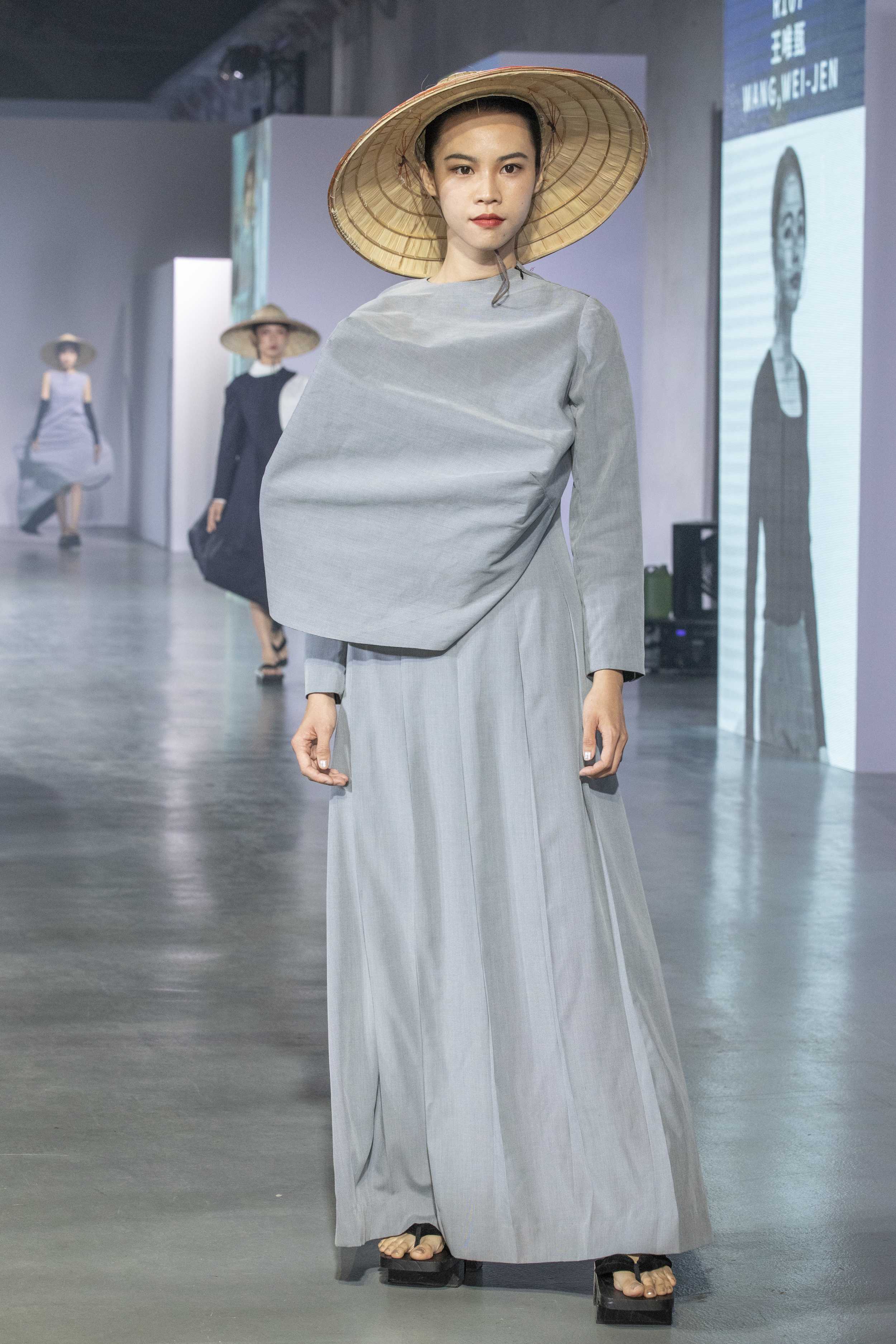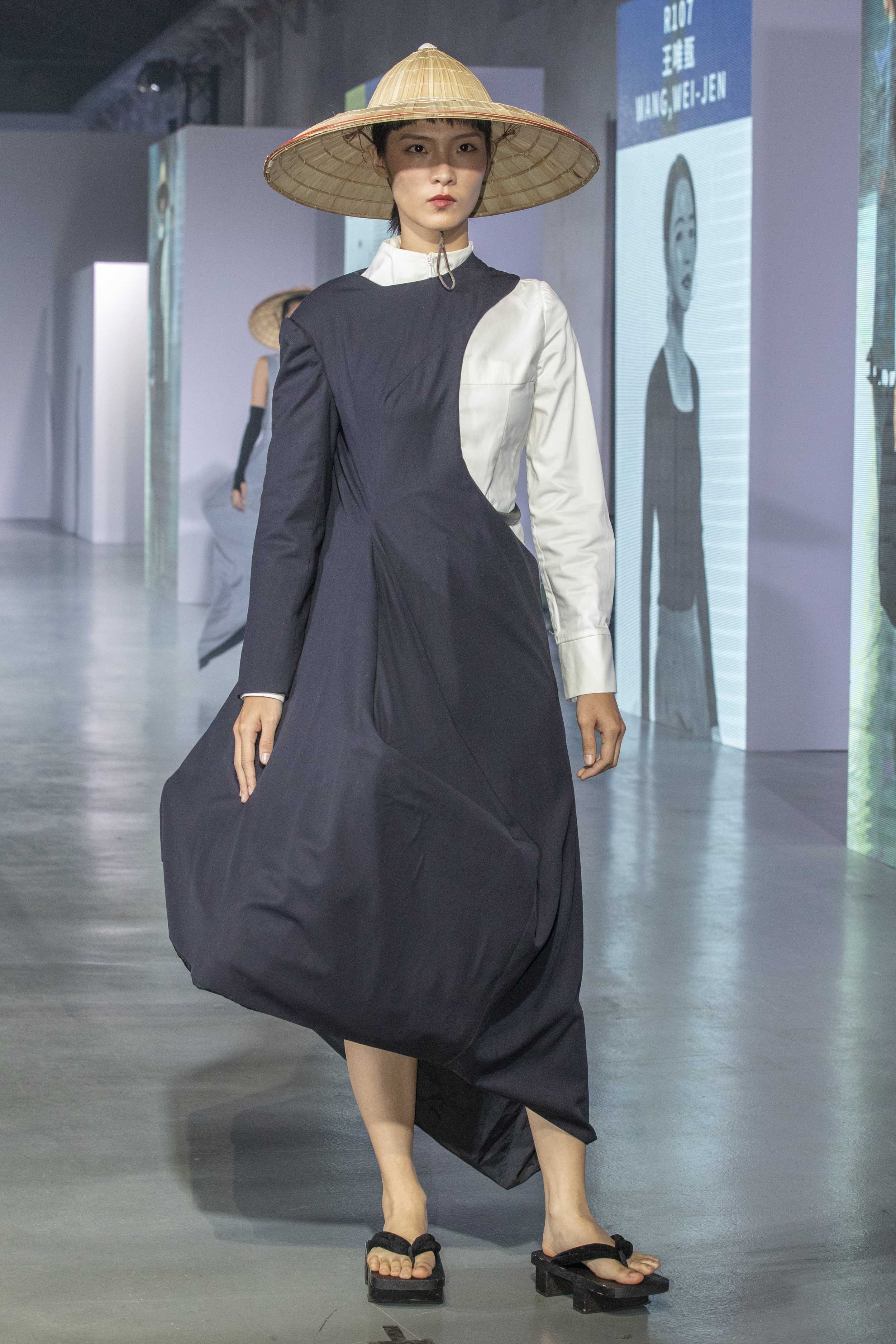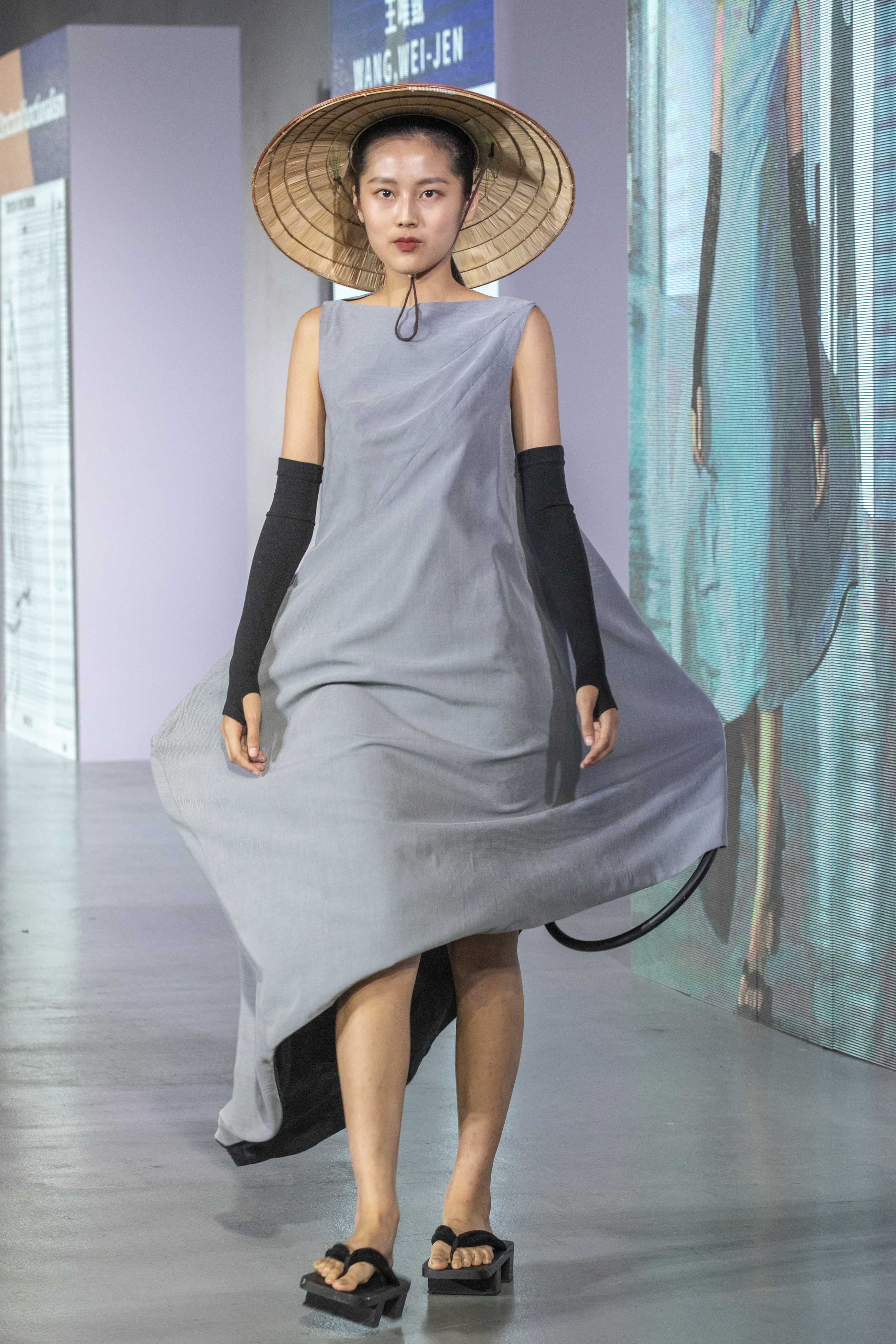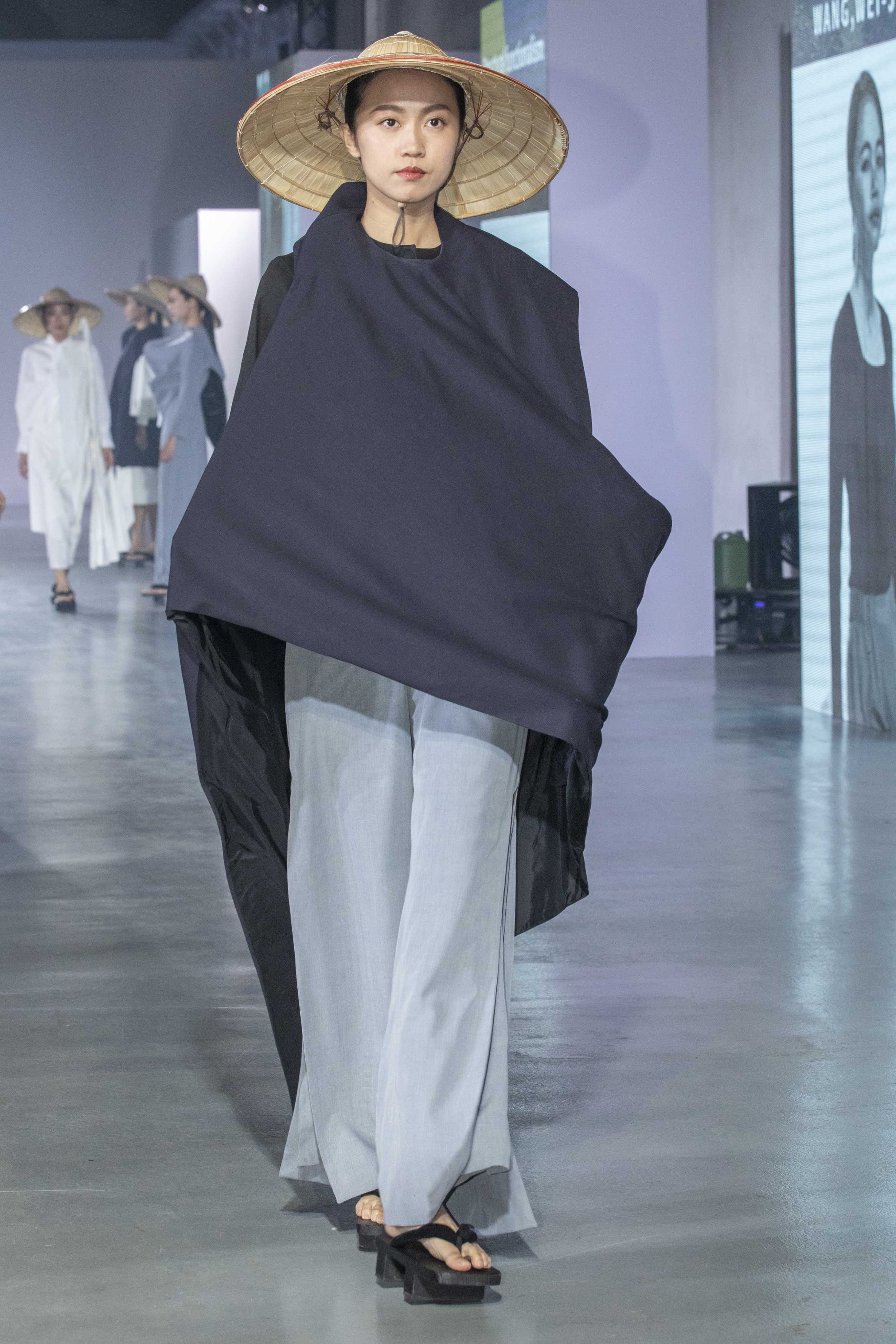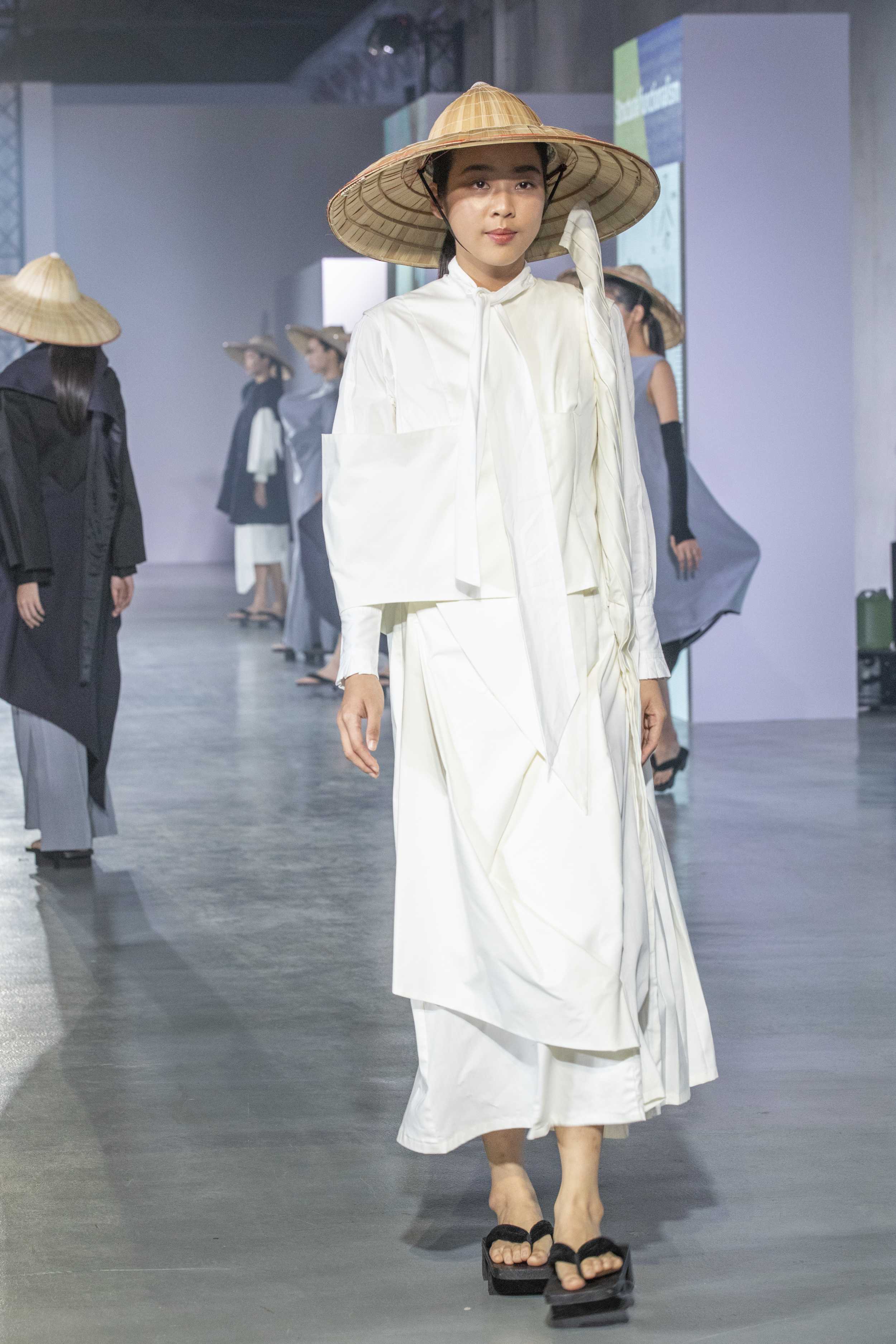作品與「永續」、「功能」、「機能」之關聯性
16世紀時期的裙撐架(farthingale)是為改變人體型態而發展出的笨重結構,只注重表徵事的外型而無用。
因此在思考此產物是否可能是具有它的功能性與實用性,結合包浩斯「型隨機能」的概念設計了可變形的衣帽架置入人體重新定義人體的輪廓增添物件的功能與機能性,並把僅限於秀上誇張戲式的服裝利用布料的墜性使支架離開服裝後回歸理性的成衣形式達到永續發展的價值
The 16th century “farthingale”is a cumbersome structure developed to change the human body shape,focusing only on the appearance of the character and useless. Therefore,thinking about whether this product may have its functionality and practicability,combined with the concept of Bauhaus "form follows function",designed the deformable coat rack into the human body to redefine the contour of the human body to enhance the function and function of the object.
And it is limited to the appearance of the exaggerated play in the fashion show,using the fall of the fabric to make the bracket leave the clothing and return to the rational form of ready-to-wear to achieve sustainable development.
